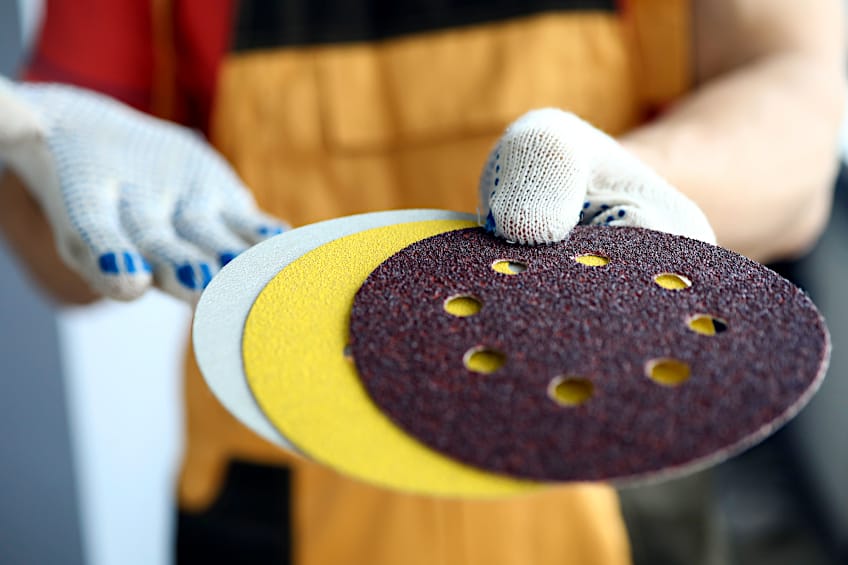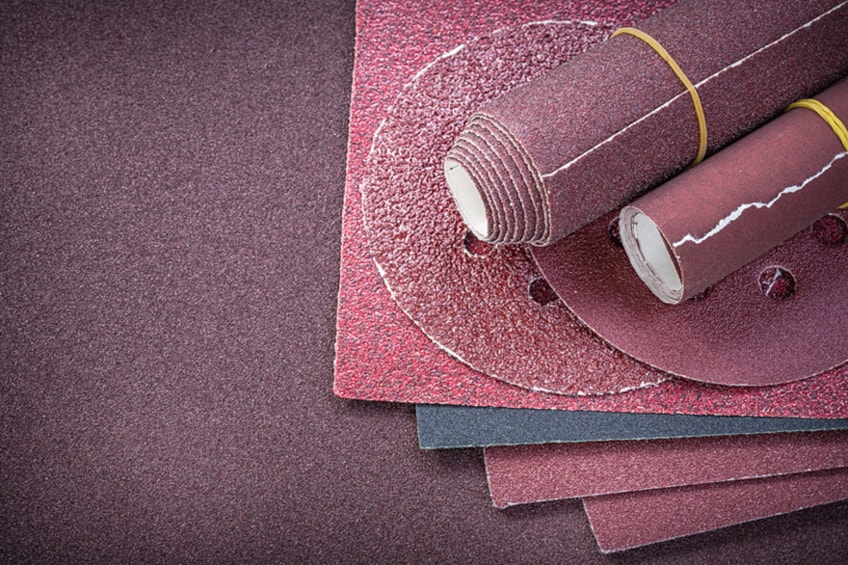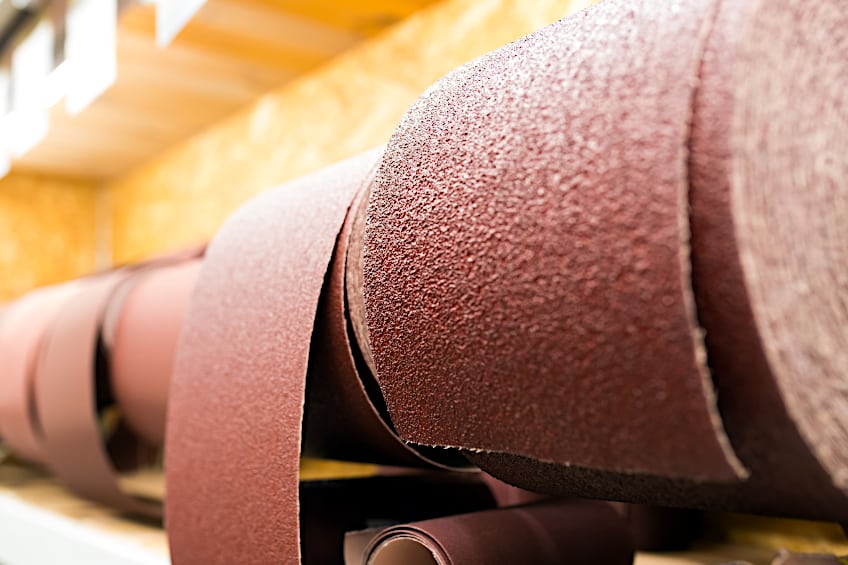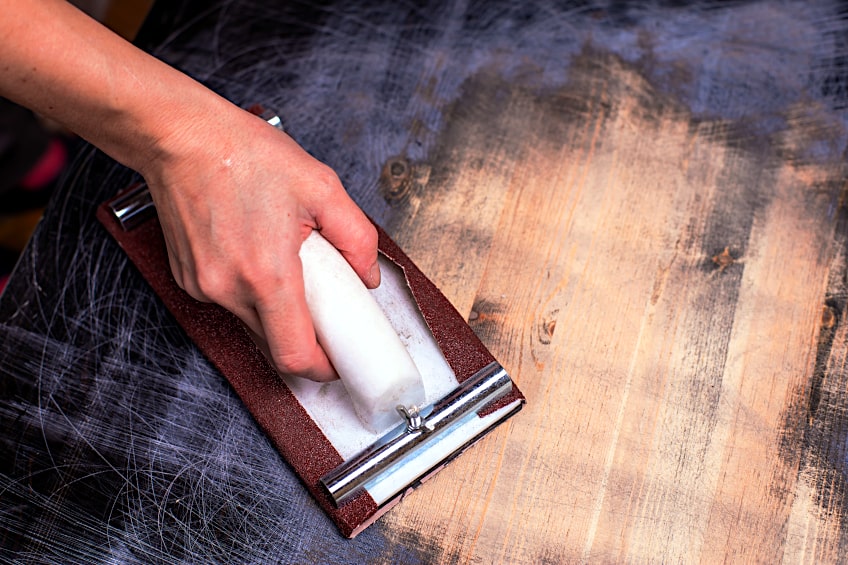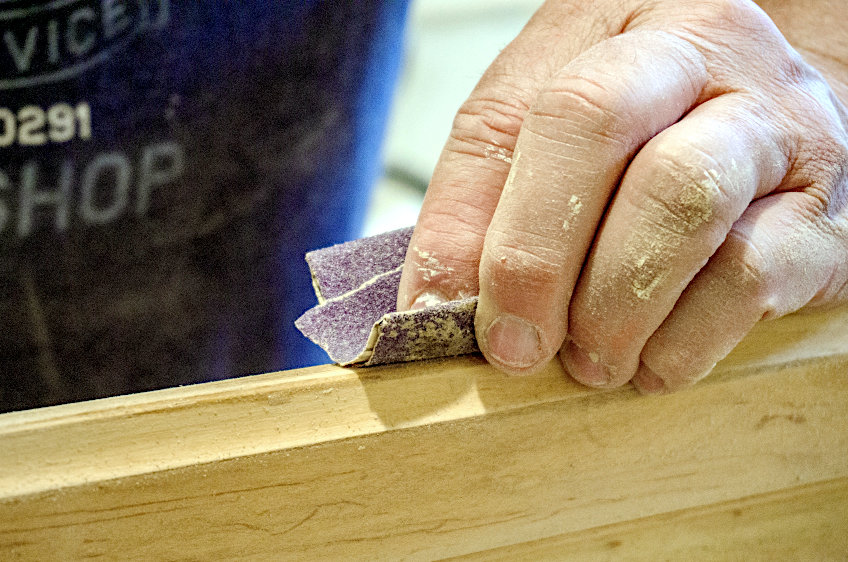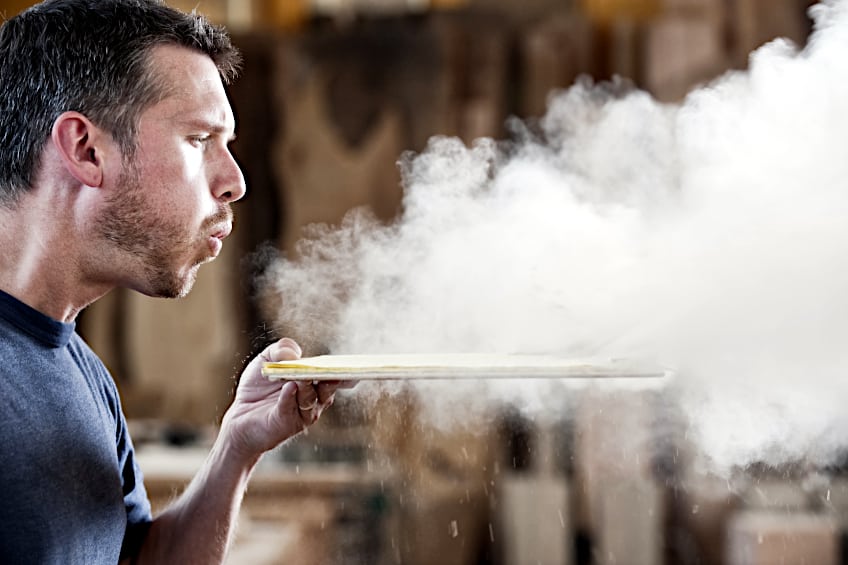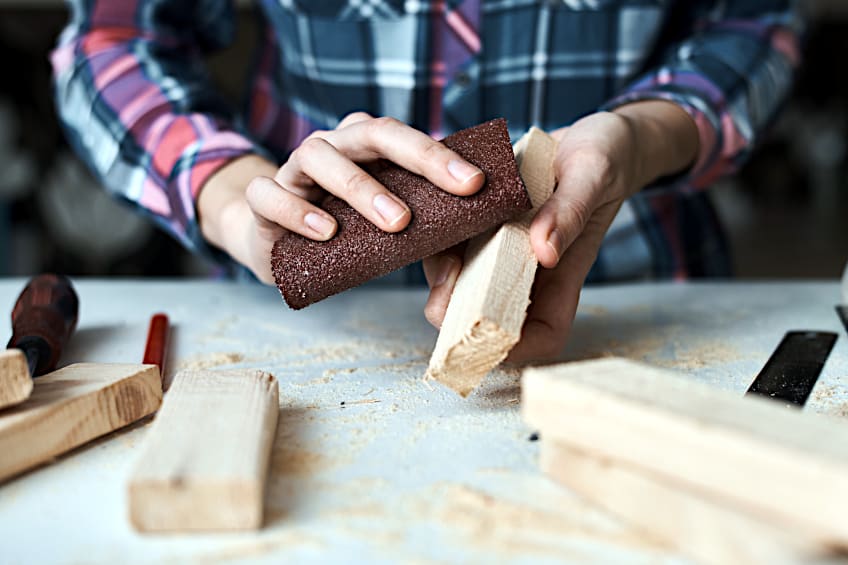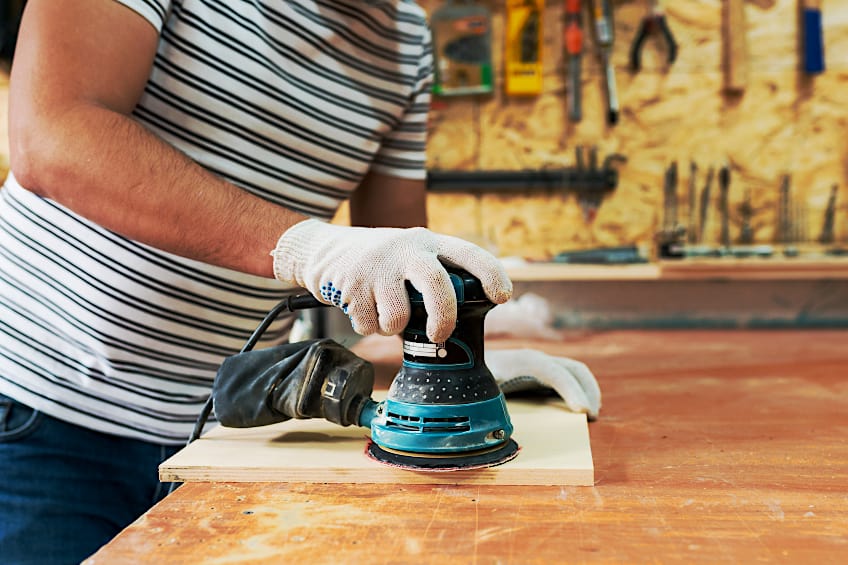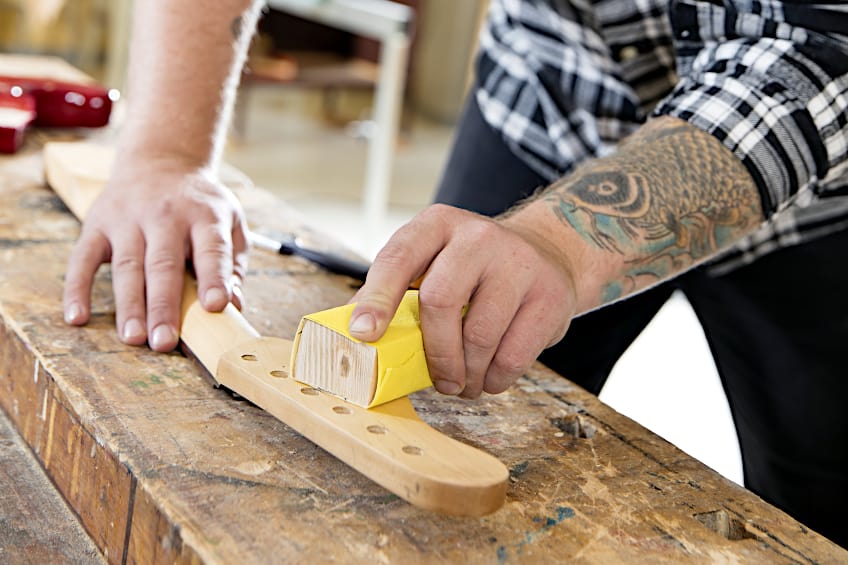What Grit Sandpaper to Use for Wood – Essential Sanding Tips
This post may contain affiliate links. We may earn a small commission from purchases made through them, at no additional cost to you. You help to support resin-expert.com
Sandpaper is needed for nearly every DIY task, whether it is preparing a surface for paint or creating a smooth finish. However, knowing what grit sandpaper for wood needs to be used is an important part of the process, as using the wrong type will do more harm to the surface than good. Below, we will take a look at different types of sandpaper and what sandpaper to use for wood. Let’s explore the rest of this article to see what comes next!
Table of Contents
Understanding Grit Sandpaper
Sandpaper may appear to be a simple thing to mark off a project checklist until you arrive at the local hardware store. Here you find yourself faced with piles of sandpaper sheets along with booklets, each clearly labeled with various numbers indicating sandpaper grits.
Anyone who does not understand how these numbers work will likely assume that the lower number indicates a finer grit whereas the higher number represents a coarser one, but it is, in fact, the opposite.
The Definition of Grit and How It Affects Sandpaper
Each grain of sandpaper does a distinct task. In general, the coarser the grit, the smaller the grit number. As a result, a 220-grit sandpaper sheet is coarser than a 400-grit sandpaper sheet. Coarser grit sandpaper is generally used for heavy sanding on uneven and rough surfaces. Fine-grit sandpaper, on the other hand, is always used to finish and polish surfaces.
Most projects require more than one kind of sandpaper, and sometimes three.
Sandpaper is made up of tiny particles derived either from organic or artificial sources. To make abrasive material, the particles (which are also referred to as grit or grain) are filtered through screens and separated by size before being attached with glue to a sponge, paper, or cloth-type substrate. The CAMI (Coated Abrasive Manufacturers Institute) devised a gradation scale for determining grit in the U.S.
The greater the number, the finer the grit of the sandpaper. The CAMI scale is used for most sandpaper, although if you acquire sandpaper online, you may come across sandpaper grit measured by FEPA (Federation of European Producers of Abrasives). The way to determine this is that the FEPA scale uses the “P” in front of the grit number.
Different Types of Grit Sandpaper and Their Uses
Each grit number is a description of what it does and this can help you decide what grit sandpaper for wood or any other material would need to be used. We have listed the different ranges of sandpaper grit and provided a table below for your reference.
- Extra fine sandpaper 150-grit and above: Used between coats of varnish or paint. It is also used for finishing and polishing surfaces.
- Fine sandpaper 100-120-grit: Used in most projects, this type of sandpaper will work for the final smooth process before the job has been completed.
- Medium sandpaper 60-80-grit: Generally used to get rid of scratches and sand rough wood.
- Coarse sandpaper 40-50-grit: Used to remove old finishes and shape wood.
- Extra coarse sandpaper 24-36-grit: Used for sanding old floors and removing old paint and varnish.
| Grade | CAMI | General Uses |
| Very fine | 150, 180, 220 |
|
| Fine | 100, 120 |
|
| Medium | 60, 80 |
|
| Coarse | 40, 50 |
|
| Extra coarse | 24, 30, 36 |
|
Choosing the Right Grit Sandpaper for Woodworking
If you are trying to decide what sandpaper to use on wood before painting or if you are generally unsure of which one to use, we have made it easy for you to decide. Stick to the list below to ensure that you get the best results.
- Polishing a wood surface after finishing requires sandpaper between 400 and 800-grit.
- Preparing a surface before applying a finish would require anything between 120 and 220-grit.
- Removing old finish and paint would require sandpaper ranging from 80 to 150-grit.
- Stock removal and shaping requires sandpaper between 36 and 100-grit.
Sandpaper for Different Projects
You will require different types of sandpaper to ensure that you are able to do a good job with a specific project. Below are the different surfaces and the different types of sandpaper grit that you should use.
Refinishing Surfaces
Giving antique furniture a new lease of life with a new layer of stain or paint can be really satisfying. However, returning that item to bare wood might be a difficult effort.
We suggest using 60-grit sandpaper to get rid of the previous clear coat and all the scratches on the surface before refinishing it. To save time, try scraping old paint prior to sanding so that you do not gum up many sanding discs in the sanding process.
Painted Surfaces
Start with a low grit, such as 80-100, then work through to 220 grit when sanding bare wood before you begin painting. This creates a very smooth surface on which the paint can effortlessly self-level for a finish that is mirror-like. Always begin your painted project using a primer for the paint to bind more easily to the exterior and require fewer applications.
Once your wood-primer has dried, gently sand the surface with 220 grit or finer to eliminate brush strokes and reduce elevated grain.
Stained Wood Surfaces
Here is a helpful hint for wood staining projects. The more evenly you sand, the lighter the wood stain will appear once dry. The darker the stain, the rougher the grit. A brighter finish will be achieved with 220 grit, whereas a darker finish will be achieved with 120 grit.
Sanding shuts the pores of the lumber, and finer grits do so more tightly. When sanded to a higher grit, the stain gets soaked into the exterior and does not infiltrate as greatly.
Drywall Surfaces
For drywall sanding, begin with 100 grit and slowly work your way up to 180-220. This generates an enormous amount of dust, so have a vacuum close by.
It would also be a good idea to block off the space to keep the dust from spreading throughout the house. You can also get vacuum sanders to collect dust as it leaves the wall.
Tips for Sanding Wood
After figuring out what grit sandpaper before staining needs to be used there are a few important tips that you will need to follow. Sanding, especially by hand, is more than simply picking up a sheet of sandpaper and going at the surface as hard as possible. Instead, there are a few things that you should always take into account when sanding.
The Proper Technique for Sanding Wood With Grit Sandpaper
Sanding by hand is straightforward, but it is easy to make a mistake. These essential criteria produce the greatest results whether you are working on a flat, concave, or convex surface, or whether you are using just one piece of sandpaper or even a rubber block.
With hand-sanding, as with machine sanding, take your time, refrain from pressing down excessively on the tool, and proceed in a constant, not erratic, manner.
Use a Chart
There are several types of sandpaper available, each with distinct advantages.
You can find abrasive charts all over the internet that substantially simplify issues.
It would be best to use a chart before starting on a particular project to ensure that you choose the proper grit.
Clean Up
To sand wood surfaces neatly, thoroughly vacuum and clean off the surface after every grit level and before going on to the following finer grit. This keeps loosened particles of abrasive material from scraping the surface and damaging what you have recently worked so diligently to polish.
Skipping Grits
When sanding, you constantly work from coarser up to finer grits.
When sanding, never skip beyond one grit level.
For instance, you may go from 120-grit sandpaper to 180, therefore ignoring 150, but going from 120-grit to 220 (ignoring 150 and 180) will result in an irregularly sanded surface with scratches. This happens when finer grits do not blend away the markings from coarser grits.
Tips on How to Avoid Common Sanding Mistakes
While it is important to know what grit sandpaper for wood needs to be used, there are also a handful of mistakes that should be avoided. Below are a few of the most common errors that are made and how to avoid them.
Staying in One Spot for Too Long
You must keep moving regardless of whether you are sanding by hand or using a machine. Otherwise, you will have an irregular surface that will not be noticeable until the finish is done. A little further sanding of the afflicted region might occasionally be justified if there is an especially deep scratch or ding in the wood, but if the flaw is truly significant, the most radical measure will certainly be necessary.
By adding some moisture to your wood, you can make the denser parts of the wood expand before sanding. Known as elevating the grain, this technique allows you to sand your wood completely smooth.
Too Much Pressure
Considering the weight of the machine is sufficient, there is no need to exert extreme downward pressure while using a power sander. It is your responsibility to steer the tool and allow it to perform the task at hand. If you notice yourself pushing down, it is probably time to replace the sandpaper. Alternatively, a coarser grit might be used.
Sanding Against the Grain
We have all heard that you should never sand against the grain. That is, to a point, good advice. There are times when sanding across the grain is acceptable. A good example of this would be to get rid of any markings made on the wood before it had been cut. Additionally, you could also sand against the grain if you are trying to level the outer layer of the wooden surface.
Sanding against the direction of the grain is frequently faster than sanding with the grain, just keep in mind that you can damage your wood this way.
However, once the first cleanup is complete, begin sanding with the wood grain. If you find yourself sanding against the grain, such as a juncture where two pieces meet at a straight angle, consider a random orbital sander using fine-grit sandpaper.
How to Achieve a Smooth Finish When Sanding Wood
To ensure that you get the smoothest finish when sanding, there are a few things that you can do to get the best results. All you need to do is follow the list below and you should be left with an extremely smooth wooden surface.
- Ensure that you are sanding enough and do not neglect the higher grits.
- Keep the surface clean before sanding.
- Sand between each coat of stain or finish.
- Be mindful of applying your finish to get it smooth.
- Use an extremely fine-grit sandpaper to polish the finish.
Knowing what grit sandpaper for wood needs to be used at any given moment is incredibly important. This will determine the type of finish that you will get and how good your wood project looks. However, it is important to stick to the advice that we have provided, and if you are unsure of which grit to use, take a look at the table we have provided. We hope that this helps with your woodworking project. Good luck!
Frequently Asked Questions
What Are the Best Sandpaper Grits for Wood?
Medium sandpaper between 60 and 80-grit is generally used to sand rough wood surfaces. However, deciding on what sandpaper to use for wood depends on what you are doing. You will use extra coarse sandpaper for removing varnish and old paint, and extra fine sandpaper for finishing.
How to Tell What Sandpaper to Use on Wood Before Painting?
Before you start painting, you should sand the wood with fine sandpaper that is rated between 100 and 120-grit. Using finer sandpaper is better for finishing the surface after the wood has been painted. If you are wondering what grit sandpaper before staining should be used, the answer remains the same.
What Are the Various Types of Sandpaper Grits for Wood?
To determine what grit sandpaper for wood would need to be used, you would need to consider the task you are working on. There are a variety of different types of sandpaper grits available, but it is important to understand that they range from extra coarse to extra fine. Each type of sandpaper has its specific use, and using the wrong type for the wrong job would do a lot of damage.


